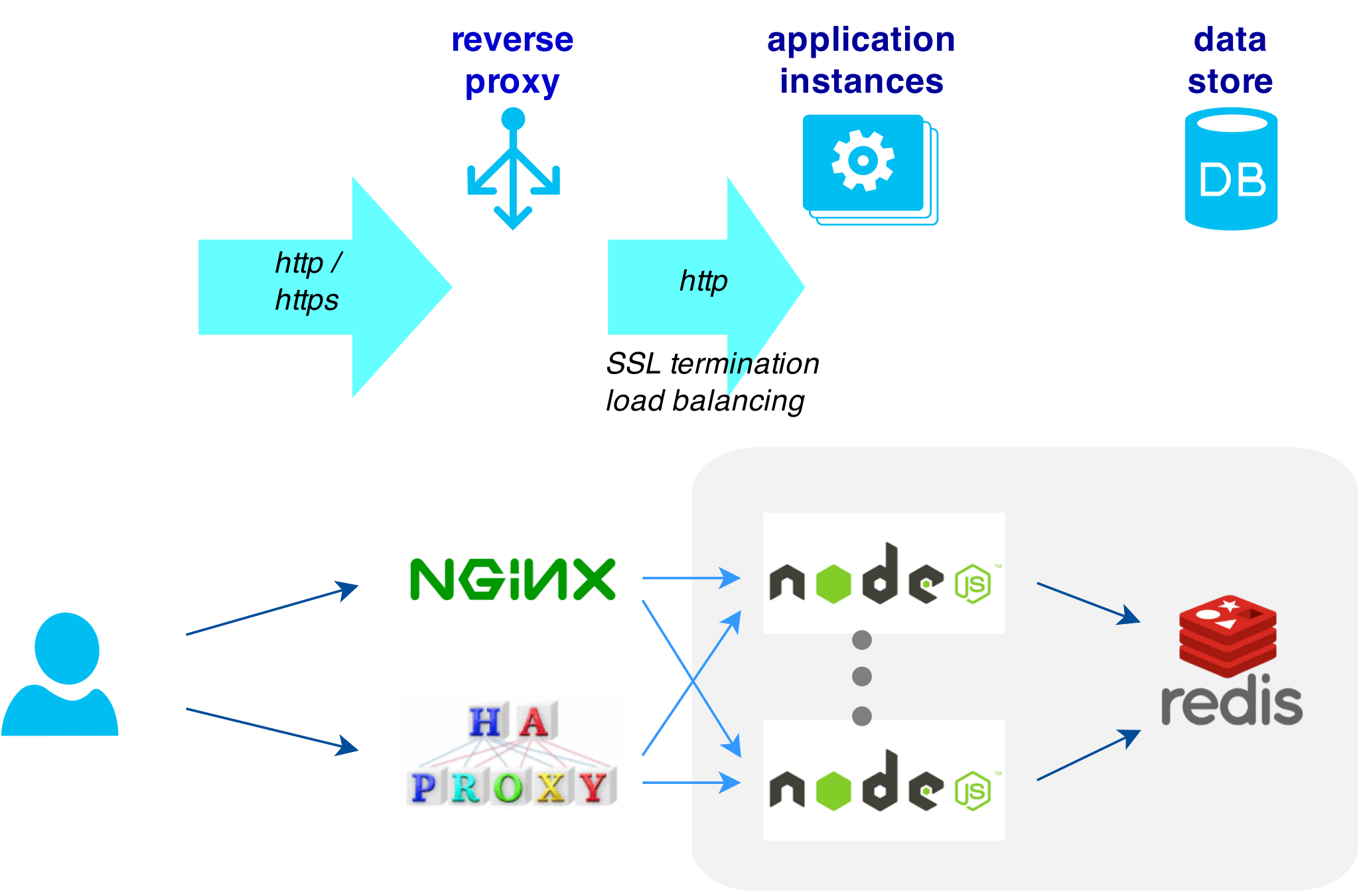Demonstrate how to use reverse proxy for backend application servers, all in the Docker's world.
-
SSL termination: use
make-cert.shto generate self-signed certificate.
-
Reverse proxy
-
Load balancing
-
Active health monitoring
-
SSL termination: use
make-cert.shto generate self-signed certificate.
- Source code in
appdirectory. - N instances.
- High availability and zero-downtime deployments via Nginx or HAProxy.
- Shared datastore across all Node.js application instances.
- Persistence: RDB and AOF modes.
First, start the whole software stack:
$ docker-compose up -d
$ docker psSecond, connect to Nginx via HTTP and HTTPS :
$ curl -v http://localhost:10080
$ curl -v --insecure https://localhost:10443
Third, connect to HAProxy via HTTP and HTTPS :
$ curl -v http://localhost:10090
$ curl -v --insecure https://localhost:10091NOTE: Nginx supports "health_check" only in its commercial product "Nginx Plus" (see this and this). Therefore, only HAProxy is demonstrated in this zero-downtime case.
First, start the whole software stack:
$ docker-compose -f docker-compose-2.yml up -d
$ docker psSecond, use browser to open HAProxy statistics report: http://localhost:10100/
Third, connect to HAProxy via HTTP and HTTPS :
$ curl -v http://localhost/
$ curl -v --insecure https://localhost/Fourth, stop one of the application instances (e.g., app1):
$ docker-compose stop app1Then, try to connect via HTTP and HTTPS. Any downtime?
Fifth, let the stopped instance come back to live:
$ docker-compose start app1Then, try to connect via HTTP and HTTPS. Does the instance recieve packets from HAProxy again?
